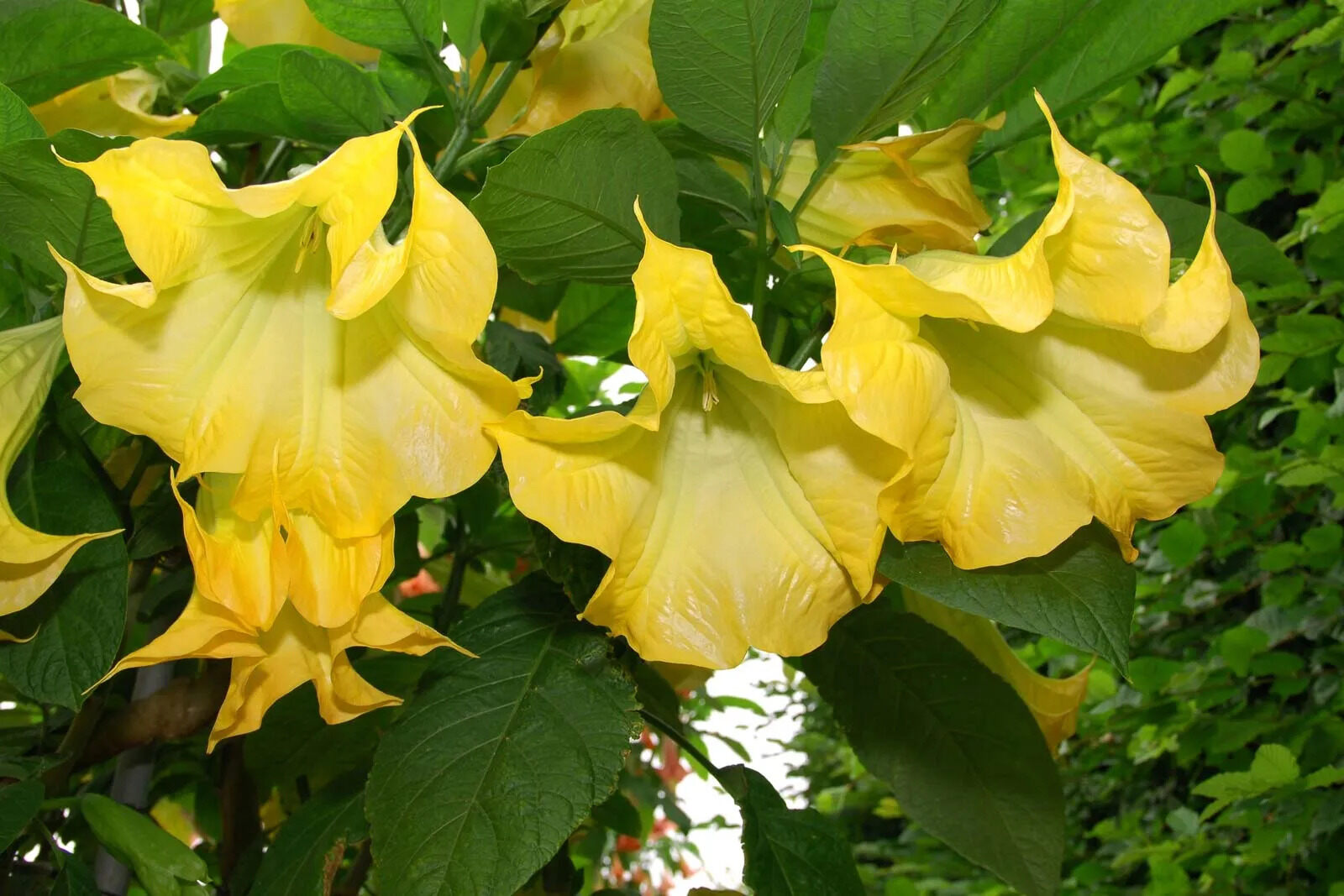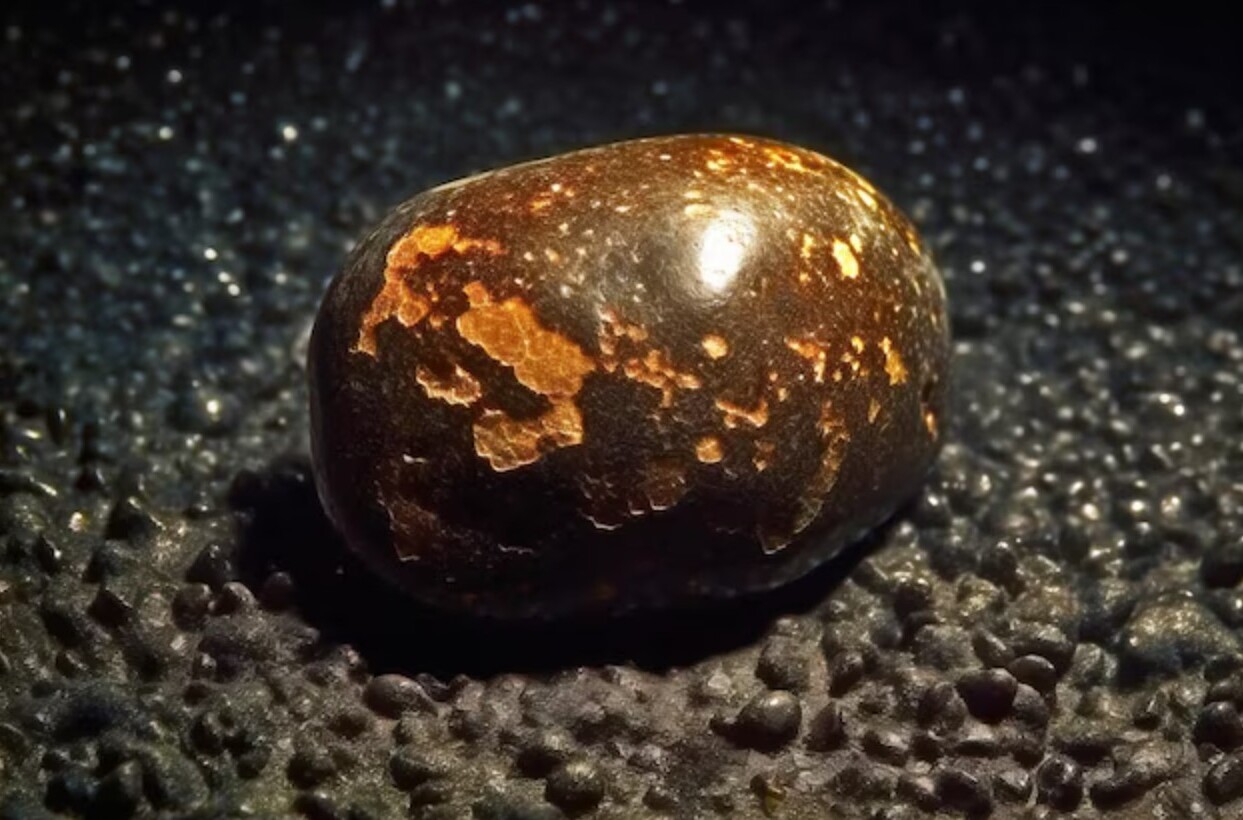
Angel’s Trumpet, also known by its scientific name Brugmansia, is a stunningly beautiful flowering plant that has captivated the attention of gardeners and plant enthusiasts worldwide. With its trumpet-shaped flowers, intoxicating fragrance, and striking colors, Angel’s Trumpet is often considered a show-stopper in any garden or landscape.
But there’s more to this captivating plant than meets the eye. In this article, we will explore 20 intriguing facts about Angel’s Trumpet that will leave you amazed and inspired. From its historical significance to its medicinal properties, there’s no denying the uniqueness and charm of this plant species.
So, grab a cup of tea, sit back, and let’s dive into the fascinating world of Angel’s Trumpet!
Key Takeaways:
- Angel’s Trumpet, a stunning and fragrant plant, is native to South America and blooms in cycles, creating a captivating display of colorful flowers. However, it’s important to handle it with caution due to its toxic nature.
- With its large, glossy leaves and dramatic flowers, Angel’s Trumpet is a low-maintenance plant that can be grown in containers and used to add an exotic touch to floral arrangements. However, it requires warm temperatures to thrive.
The Angel’s Trumpet plant belongs to the Brugmansia genus.
The Angel’s Trumpet is a flowering plant that falls under the Brugmansia genus. With its trumpet-shaped flowers and intoxicating fragrance, it has become a favorite among garden enthusiasts.
Angel’s Trumpet is native to South America.
Originating from the tropical regions of South America, specifically in countries like Brazil and Ecuador, Angel’s Trumpet has now spread to different parts of the world.
The flowers of Angel’s Trumpet are large and pendulous.
The flowers of this plant can be truly stunning. They come in various colors, including white, yellow, pink, orange, and even a combination of these hues. The flowers hang down like trumpets, hence the plant’s common name.
It is often used as an ornamental plant.
Due to its beautiful flowers and pleasant fragrance, Angel’s Trumpet is frequently used as an ornamental plant in gardens and landscapes. It adds a touch of exotic charm to any outdoor setting.
Angel’s Trumpet flowers are highly fragrant.
The flowers of Angel’s Trumpet emit a strong and delightful fragrance, especially during the evening and night. The scent is often described as sweet and alluring.
Angel’s Trumpet flowers bloom cyclically.
The flowers of this plant bloom in cycles, with each flower lasting for a few days. This creates a captivating and ever-changing display of blossoms throughout the blooming season.
All parts of the Angel’s Trumpet plant are toxic.
While Angel’s Trumpet is undoubtedly a beautiful plant, it is important to handle it with caution. All parts of the plant, including the flowers, leaves, and seeds, contain toxic compounds that can be harmful if ingested.
Angel’s Trumpet is used in traditional medicine.
In certain cultures, specific parts of the Angel’s Trumpet plant are used in traditional medicine for their potentially hallucinogenic and analgesic properties. However, it should be noted that these uses are highly controversial.
It is possible to propagate Angel’s Trumpet through cuttings.
One way to expand your Angel’s Trumpet collection is by taking cuttings from a mature plant. With proper care and rooting techniques, these cuttings can develop into healthy new plants.
Angel’s Trumpet can be grown in containers.
If you don’t have a large garden space, fear not! Angel’s Trumpet can be grown in containers, allowing you to enjoy their beauty even in a limited area.
The plant requires warm temperatures to thrive.
Angel’s Trumpet thrives in warm climates and prefers temperatures between 65°F (18°C) to 80°F (27°C). It may not survive in regions with very cold winters.
Angel’s Trumpet can reach impressive sizes.
When given the right growing conditions, Angel’s Trumpet can grow into large shrubs or small trees, reaching heights of up to 15 feet (4.5 meters) or more.
It is pollinated by moths and other nocturnal insects.
Angel’s Trumpet flowers are specifically adapted to attract moths and other nocturnal insects. The flowers open and release their fragrance in the evening to entice these pollinators.
Some Angel’s Trumpet varieties are double-flowered.
While the typical Angel’s Trumpet flowers have a single layer of petals, there are also double-flowered varieties available. These have additional layers of petals, creating a fuller and more voluminous appearance.
The leaves of Angel’s Trumpet are large and glossy.
The foliage of this plant is just as attractive as its flowers. The leaves are large, with a glossy texture, and they add a lush green element to the overall appearance of the plant.
Angel’s Trumpet blooms during the summer months.
The blooming season for Angel’s Trumpet typically occurs during the summer months when temperatures are warmer and more favorable for flower development.
The plant is vulnerable to frost damage.
While Angel’s Trumpet prefers warmer climates, it is sensitive to frost. Exposure to freezing temperatures can cause damage to the plant, including wilting and leaf discoloration.
Angel’s Trumpet is often used in landscaping for its dramatic effect.
Thanks to its impressive size and gorgeous flowers, Angel’s Trumpet makes a stunning addition to any landscape design. It can be used as a focal point or to create a dramatic entrance.
The plant is easy to care for with regular watering and feeding.
Angel’s Trumpet is relatively low-maintenance, requiring regular watering and occasional feeding with a balanced fertilizer to support healthy growth and abundant flowering.
Angel’s Trumpet flowers can be used as cut flowers for floral arrangements.
The exquisite blooms of Angel’s Trumpet can be cut and used in floral arrangements, adding an exotic touch to any bouquet or centerpiece.
Conclusion
Angel’s Trumpet is a fascinating plant that captivates gardeners and plant enthusiasts alike with its intoxicating fragrance and stunning trumpet-shaped flowers. As we explored in this article, there are numerous intriguing facts about Angel’s Trumpet that make it a standout addition to any garden.
From its rich history in traditional medicine to its toxic properties, Angel’s Trumpet holds both beauty and danger. Its large, pendulous flowers, which bloom in a variety of colors, are a sight to behold and attract a range of pollinators.
Whether you’re interested in the plant’s unique characteristics, its cultural significance, or its potential uses, Angel’s Trumpet offers a wealth of knowledge to discover. So, why not consider adding this extraordinary plant to your garden and witness its allure firsthand?
FAQs
1. Is Angel’s Trumpet suitable for all regions?
While Angel’s Trumpet is a tropical plant, it can be grown in other regions as well. However, it may require additional care or protection in colder climates.
2. Are all parts of Angel’s Trumpet poisonous?
Yes, all parts of the Angel’s Trumpet plant, including the flowers, leaves, seeds, and stems, contain toxic compounds that can be harmful if ingested. It is essential to handle this plant with caution and keep it away from children and pets.
3. How often should I water Angel’s Trumpet?
Angel’s Trumpet plants require regular watering, especially during hot and dry weather. It is important to keep the soil evenly moist but not waterlogged.
4. Can I grow Angel’s Trumpet indoors?
Yes, you can grow Angel’s Trumpet indoors, but it requires ample sunlight and a suitable container with proper drainage. Make sure to provide adequate space for the plant to grow and avoid overcrowding.
5. What is the best time to prune Angel’s Trumpet?
The best time to prune Angel’s Trumpet is in late winter or early spring before the new growth appears. Remove any dead or damaged branches and shape the plant as desired.
Was this page helpful?
Our commitment to delivering trustworthy and engaging content is at the heart of what we do. Each fact on our site is contributed by real users like you, bringing a wealth of diverse insights and information. To ensure the highest standards of accuracy and reliability, our dedicated editors meticulously review each submission. This process guarantees that the facts we share are not only fascinating but also credible. Trust in our commitment to quality and authenticity as you explore and learn with us.


